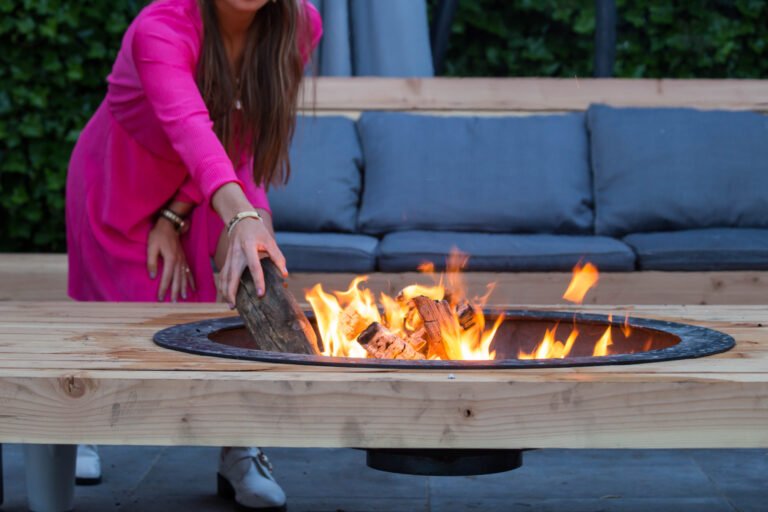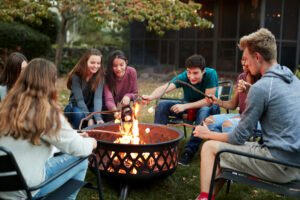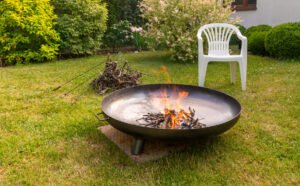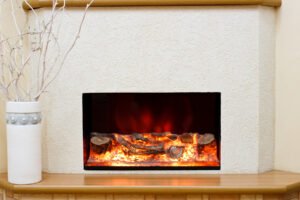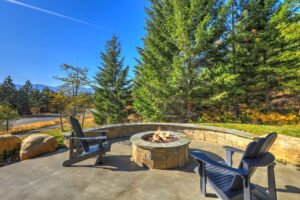Enjoying the parties around the outdoor fire pit under a starry night is on almost everybody’s bucket list. That makes many people want to get a fire pit for their backyard; however, most do not know how to use it.
If you’re new to using fire pits, you may have a lot of questions in your mind, like what you should and should not burn in a fire pit. Or what can you burn in a fire pit? So today, let’s find out the answers to all your questions.
You can burn various things in your fire pit that will start a fire and last long, including certain woods, natural materials, and certain artificial items that need to be burned with care. Remember not to burn plastic, painted objects, or anything else that produces noxious fumes.
What Woods Can You Burn in a Fire Pit?
There are different types of natural materials, primarily seasoned firewood, that can be burned in a fire pit. And different woods cater to different demands.
But, if you think you can burn all kinds of wood, you may be mistaken. So, here are some of the best wood you can burn in your outdoor fire pit or use for open burning:
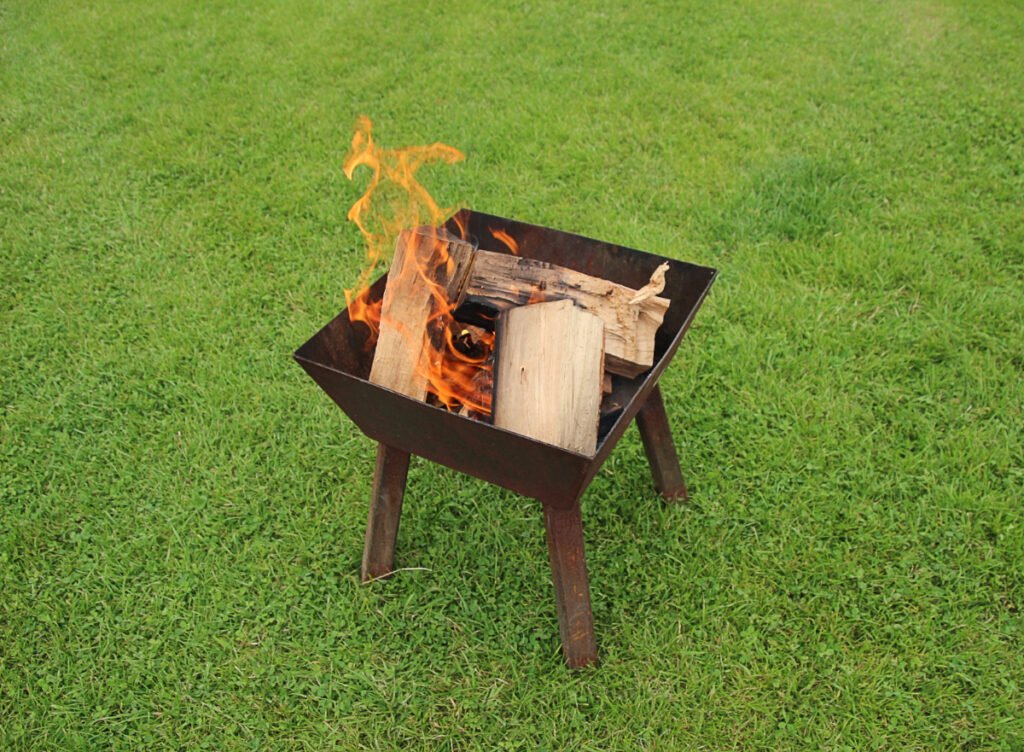
- Oak: Oak is the go-to choice if you are looking for long-lasting fires that generate a lot of heat in your fire pit. It is a hardwood, having high energy content per cord that ensures it releases more heat per firebox load.
- Mesquite: Mesquite wood is the cleanest option as it does not produce a lot of sparks. You can mix it with coals to get more heat and fire in your fire pit. For best results, use seasoned wood.
- Apple Wood: Although the apple wood is difficult to ignite, it is worthwhile as it exudes a classic fragrance that sets the aura. This wood will burn slowly and endure for a long time.
- Alder: Alder is a deciduous hardwood that gives a rich and excellent recreational fire, especially when mixed with charcoal.
- Hickory: Hickory is one of the strongest woods and a highly popular option for a fire pit or open fire because it kindles fire and burns for a longer time.
- Pinion Wood: Pinion wood has two unique advantages. First, it is a natural mosquito repellant, which is perfect, especially when children are present. Second, it offers a smoky pine odor.
- Cherry Wood: Cherry wood provides a sweet fragrance and moderate fire but can also cause embers.
- Cedar: Cedar is a softwood made of resin. Though the resin gives out high flames, cedar wood will quickly abate and die down. So, it is necessary to mix cedar with hardwood for continuous recreational fires.
- Pecan Wood: Pecan wood does not burn as intensely as some other hardwoods but is perfect for born fires as it gives out a sweet vanilla and nut scent.
Can You Burn Leaves in a Fire Pit?
Though burning leaves in a fire pit is not the best idea, it is not impossible if certain measures are followed. Remember to start by burning only dry leaves in a fire pit, as wet leaves can be dangerous and produce massive smoke that can hamper visibility.
However, it is not really safe to do it in a fire pit as the fire bowl tends to be shallow and might not contain sparks. So, it would be best to use a spark screen and wind guards to restrain embers from flying out.
If you want a much safer alternative, use a 55-gallon steel drum burning barrel with air vent holes and fill it with dry leaves. However, do not overfill it, as the congestion will strip oxygen out of the fire, and the fire will quickly die down.
Can You Burn Paper in a Fire Pit?
No, you can not and should not burn paper in a fire pit. This releases carbon dioxide, greenhouse gases, and many other toxic chemicals into the environment, hampering not only the atmosphere but also your health.
However, if you are keen on burning paper in your fire pit, and if it is legal and permitted by the fire department and HOAs, you can burn papers in a 1-2 feet elevated stone and brick fire pit and cover it with a screen guard and spark screen.
Moreover, ensure the weather is not windy, as it can blow the burning papers and spark a fire on trees and grass. Lastly, clear any combustible materials surrounding the fire pit and place it at a safe distance.
Can You Burn Coal in a Fire Pit?
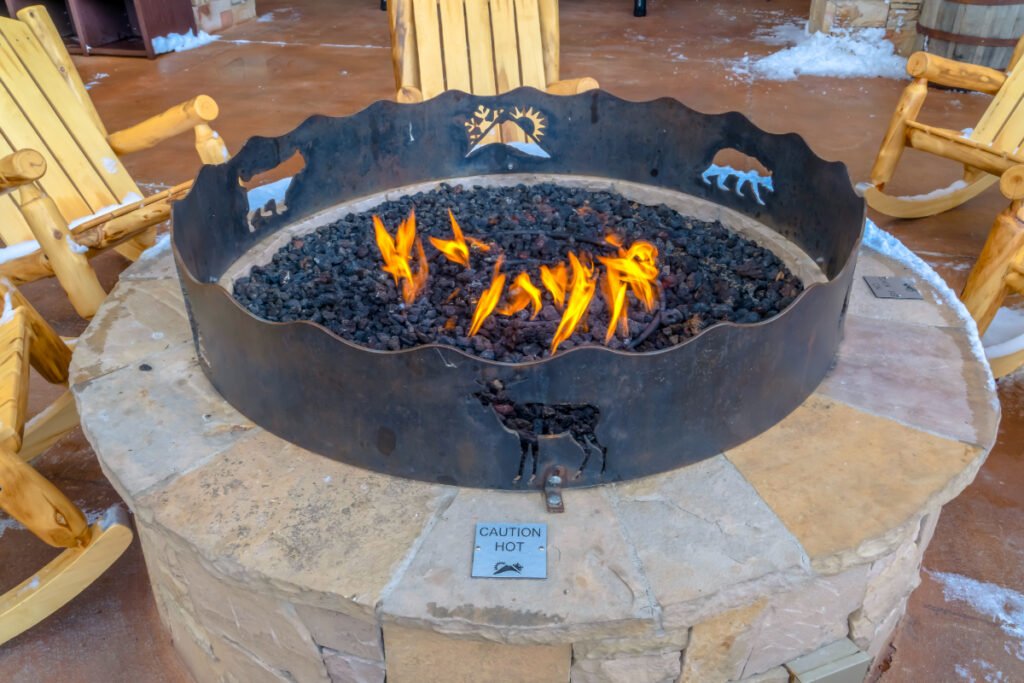
Coal and wood can be interchangeably used in a wood-burning fire pit. In addition, coal is a much cheaper alternative and does not require a labor-intensive process or skills. You can easily find coal in Walmart or local stores.
It is much easier to manage and handle fires with coal than with wood because coal is quicker to ignite and burns for a more extended period. Meanwhile, with wood, you may need to constantly check and place sticks and paper balls beneath them to keep them kindled.
Moreover, some fire pits come with a handy drop-in grill grate that can turn the wood fire pit into a charcoal grill when used with charcoal.
Can You Burn Cardboard in a Fire Pit?
No, burning cardboard in a fire pit is highly dangerous. Cardboard is made of chemicals and contains inks that can release toxic gases into the air. It seems easier to ignite a recreational fire in a fire pit with cardboard, but it can be hazardous.
These toxic gases will harm the environment and your health. Furthermore, cardboard is lightweight and prone to floating; a wind gust can quickly fly the cardboard and spark a fire on nearby flammable structures.
Can You Burn Yard Waste in a Fire Pit?
Yes, you can burn yard waste in a fire pit if it is legal and permitted by the HOAs. A cinder block fire pit is best for burning yard waste. But ensure a safe distance between the fire pit from home and the wind isn’t strong outside.
You can create a burn area that is no larger than 3 to 4 feet high and around. Use leaves and newspaper as fire starters and avoid fuels, household trash, and plastic. Make sure to use a spark screen on top of the fire pit to restrain embers that would otherwise fly off and spark a fire.
However, if there is no fire pit, it is recommended that yard ware be burned in burn barrels for a cleaner and smoke-free experience. Also, always keep a water source and fire extinguisher nearby to doze off the fire quickly in case of emergencies.
Can You Burn Bamboo in a Fire Pit?
Yes, you can burn bamboo in a fire pit as It is one of the most economical materials and is easier to burn. But as bamboo burns out quickly, mix it with hardwoods for the fire to last long. Also, be careful as bamboo wood may explode on fire sometimes and leave too much ash.
You can simply avoid explosions by splitting green bamboo and letting it dry. This process will retrain air trapping in the bamboo. Not only is bamboo an efficient option but there are also some advantages to burning bamboo in a fire pit. Read below to know more:
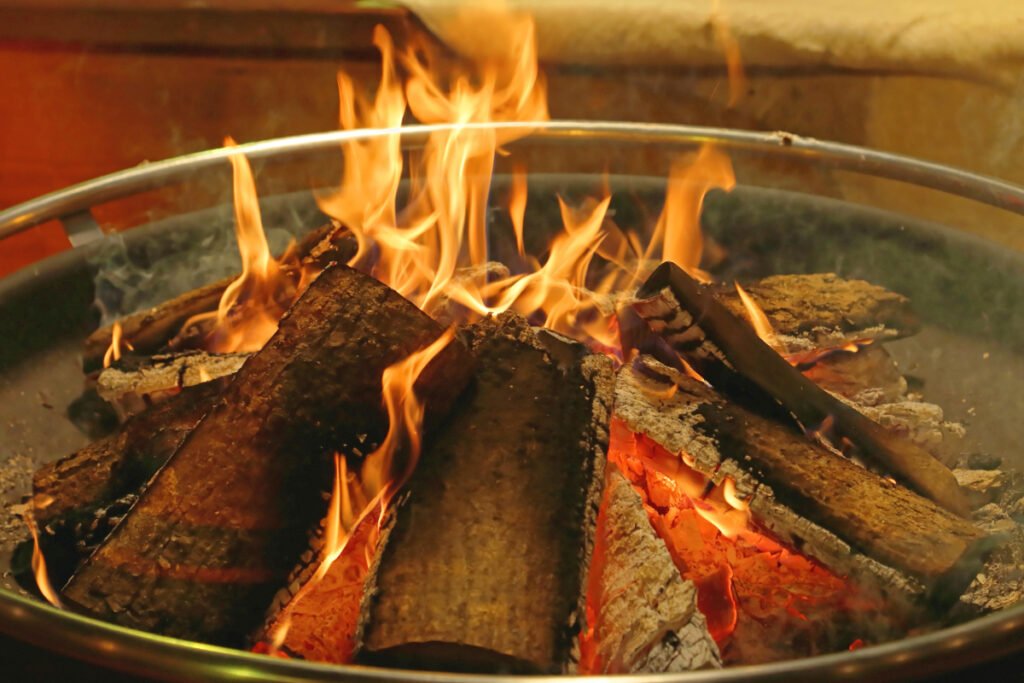
- Hardwoods can be difficult to light, whereas bamboo can be easier to light and help start a fire quickly, which is ideal for campers.
- Bamboos quickly release heat and warmth, which is best for winters. Also, they boost the temperature of the surroundings very fast.
- Bamboo is a sustainable and eco-friendly option as it grows much faster than other woods, needs little maintenance, and does not produce as harmful gases as other firewood may.
Sustainable Alternatives to Burning in a Fire Pit
There are a few excellent sustainable alternatives that can be burned in a fire pit. They are eco-friendly and don’t cause much harm to the environment. Below are the two best sustainable options:
1. Wood Pellets
Wood pellets are made from compressed kiln-dried wood fibers that can be burned in a steel log-sized basket in a fire pit. They come with many advantages that make them a suitable, sustainable choice. Here are some of the perks:
- As kiln-dried fibers are lightweight and immune to pests, they can be easily transported anywhere compared to other firewood.
- Wood pellets come in a dry package and can easily and quickly light the fire.
- They come in small packages that are easier to haul around than heavy wood logs.
2. Wood Bricks
Wood bricks are also made of kiln-dried wood. They produce more heat and give out a low-moisture, clean-burning. In addition, they are lightweight and efficient, as a single pound of brick equals 1.7 pounds of regular firewood. This also helps in saving a lot of fuel.
Further, wood bricks are environmentally friendly as they are free of chemicals and ideal for camping. They are even better than wood pellets as they create less mess and are easy to maintain. Finally, they can also be used on wood stoves.
What Can You Burn in a Gas Fire Pit?
As the name suggests, you should use natural gas as fuel in a gas fire pit and avoid wood in any case, as it can damage the fire pit. Additionally, you can add glass beads and lava rocks that help break and distribute the fire and add a nice aesthetic to the fire pit.
However, it is vital to remember that you should not use stones, glass, and rocks not designed for fire pits as they can lead to explosions, causing hazardous situations. Lastly, take good care of the fire pit after the fire is put off, as these materials can hold heat even after the fire is extinguished.
What Can You Burn in a Chimenea?
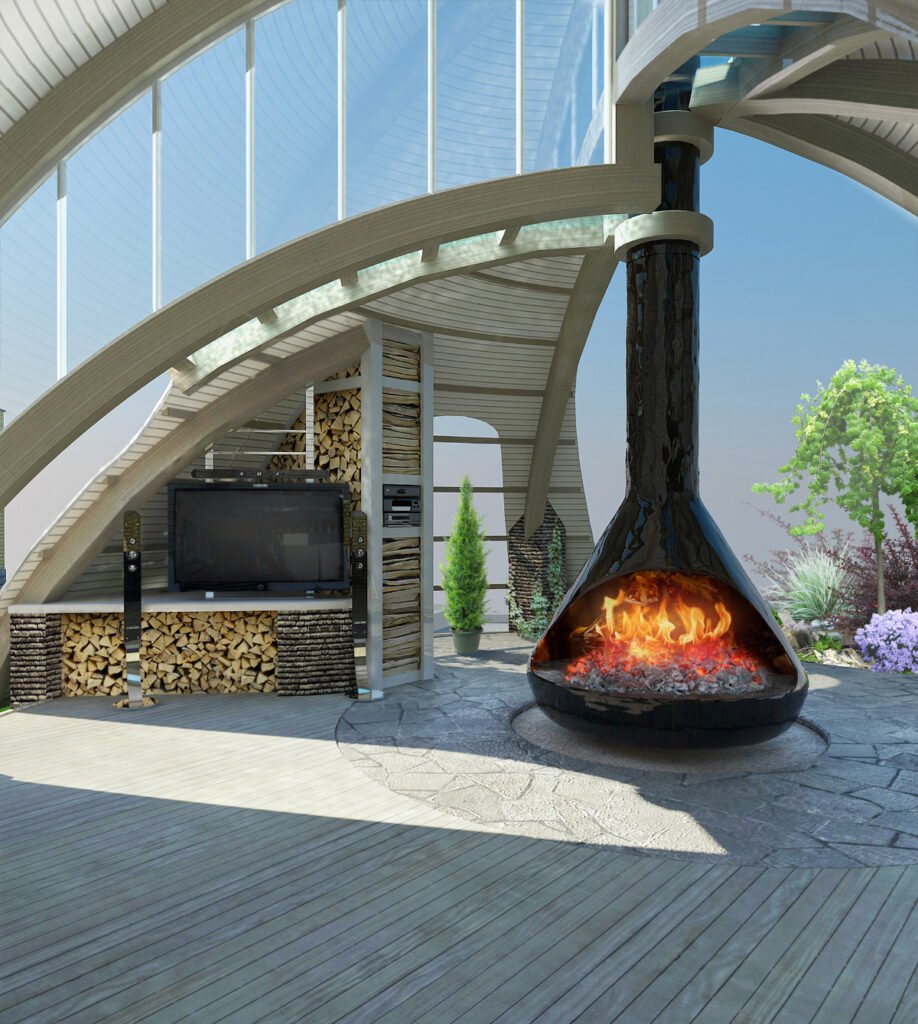
Chimeneas are Mexican-style heaters with only one opening. They are commonly used indoors to provide warmth, but they are nowadays also used outdoors. There are three types of chimeneas, each using different materials to burn.
Firstly, cast iron or steel chimenea can be used to burn different materials such as wood, coal, and charcoal. However, a fire clay chiminea should only be used to burn dry wood.
Things You Should Never Burn in a FirePit
When using a fire pit, you must be careful what you put in it, as a wrong addition can cause severe damage. There are certain materials you should never burn in your outdoor fireplace for your safety, public safety, and the environment, and these are as follows:
- Plastics: When plastics are burned, they release toxic chemicals and fumes such as dioxins, furans, and styrene gas into the air, which is bad for you and the environment. They also give off a foul and nasty odor that is not desirable for parties.
- Green or Soft Woods: You should not burn green woods that are freshly cut and have a lot of moisture, as they will not burn quickly and give out a lot of smoke. Also, avoid burning softwoods such as pine or cypress wood, as they release wood smoke, too.
- Magazines: Avoid burning magazines, colored gift wrapping paper, and junk mail, as the ink printed over them can release toxic gases. You can recycle them instead.
- Accelerants: It is best to avoid gasses and other flammable liquids or accelerants that can cause explosions.
- Pressure Treated Wood: Pressure-treated wood is basically wood treated with various chemicals. So you should not burn this wood as it can release toxins into the air.
- Wooden Pallets: Not all, but some of the wooden palettes are treated with a chemical named methyl Bromide labeled as MB, which can be released when burned.
- Painted Wood: Wood that has been painted is prone to releasing toxic fumes and should be avoided while burning. Some may also contain lead paint, which can be extremely harmful.
- Cardboard: Cardboards have ink over them which can release harmful chemicals and are known to spark a fire quickly.
- Particleboard: Some low-quality and inexpensive furniture can be made of particleboard. Strong adhesives hold the particleboard together, making it unsafe to burn, as it can emit toxic fumes.
- Poison Oak, Ivy, Or Sumac: Some plants and weeds, such as oak, sumac, and ivy, contain an irritant oil known as urushiol. This oil releases toxic fumes that can cause severe lung irritation and allergic respiratory problems.
Precautions to Take While Burning Materials in a Fire Pit
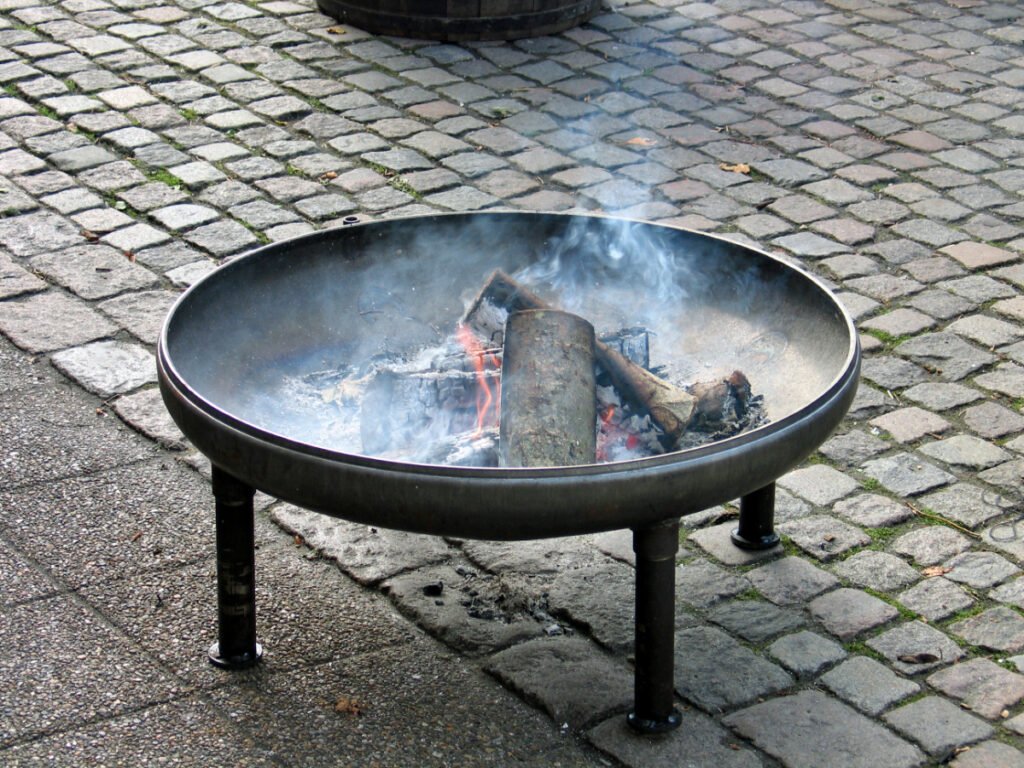
- Firstly, check your municipality’s bylaws and burn bans to determine whether it is legal to burn specific materials in a fire pit in your local arena.
- If required, do not forget to get a burn permit from the fire marshal to burn materials in your fire pit.
- Use safe starters such as thick papers instead of fuels to start the fire and restrain fire hazards.
- Do not burn certain materials like leaves in your fire pit if you have allergies or other health conditions.
- Remember that the heavy smoke produced by burning leaves or papers can contaminate the air, result in pollution, and cause wildfires.
- Make sure to keep a fire extinguisher and a garden hose nearby for fire prevention, along with an emergency number in case of any mishaps.
- Lastly, after burning materials in certain fire pits like a cast iron fire pit, extinguish it completely and clean the debris, ashes, and soot left behind.
Should you clean the fire pit after each use?
You should regularly clean your fire pit after every use to maintain good maintenance and longevity. Cleaning can include removing ashes, wood, dust, and debris. You must also deep clean your fire pit every six months.
Can I leave ash in a fire pit?
You can leave ashes in the fire pit for several days until they completely cool down. Then, you can dispose of them with garbage or find ways to reuse them.
Are fire pit ashes good for anything?
If you have fire pit wood ashes, you can use them as a fertilizer for your garden as they contain magnesium, calcium, potassium, and phosphorous. They will change the soil’s ph level and help the plants grow stronger.
Knowing what you can and shouldn’t put in your backyard fire pit is crucial for safety and a sound environment. The above guide will help you understand what to put in a fire pit, what to avoid, and its pros and cons. So, make sure you only burn the right things in your fire pit.
But even after taking all the measures, if your fire pit isn’t working right, you can replace your traditional fire pit with some trendy fire pit alternatives I’ve listed in my next blog!

